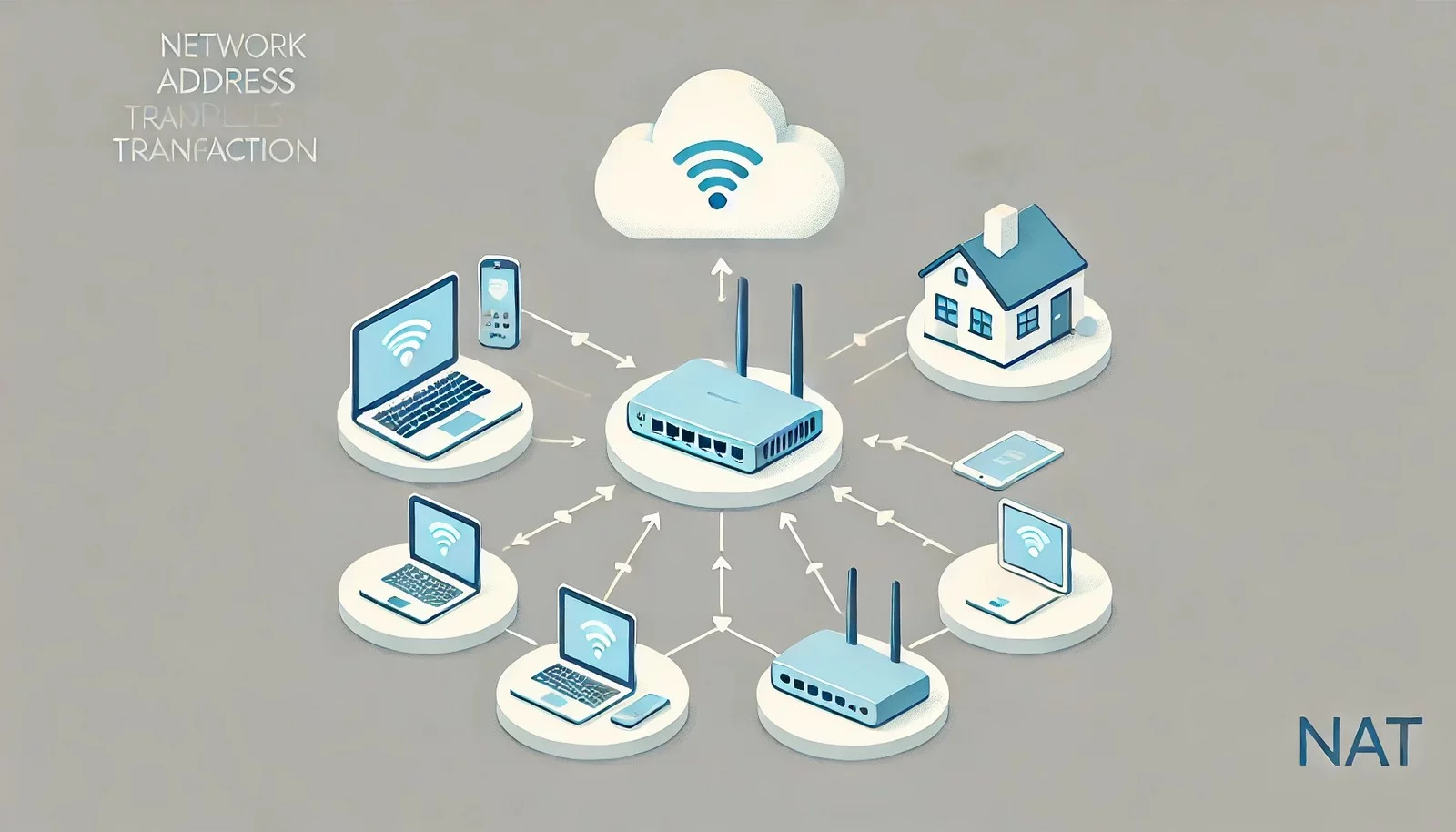Network Address Translation (NAT)

(Representational Image | Source: Dall-E)
Quick Navigation:
- Network Address Translation (NAT) Definition
- Network Address Translation (NAT) Explained Easy
- Network Address Translation (NAT) Origin
- Network Address Translation (NAT) Etymology
- Network Address Translation (NAT) Usage Trends
- Network Address Translation (NAT) Usage
- Network Address Translation (NAT) Examples in Context
- Network Address Translation (NAT) FAQ
- Network Address Translation (NAT) Related Words
Network Address Translation (NAT) Definition
Network Address Translation (NAT) is a method used in computer networking where one or more local IP addresses are translated into one or more global IP addresses and vice versa. This allows multiple devices on a private network to access the internet using a single public IP address. NAT acts as a mediator between internal and external networks, modifying IP address information in the packet headers while they are in transit. It enhances security and conserves the limited pool of public IP addresses.
Network Address Translation (NAT) Explained Easy
Imagine you have many toys in your room, but only one window to show them to the world. Every time someone outside wants to see one toy, your parent shows it through that same window. The world thinks there’s just one window (public IP), but inside, many toys (devices) exist. NAT is like that parent, deciding which toy to show and making sure the right one is visible.
Network Address Translation (NAT) Origin
NAT originated in the early 1990s as a response to the growing shortage of IPv4 addresses. Engineers realized that by allowing multiple devices to share a single public IP address, they could slow down the exhaustion of IPv4 address space.
Network Address Translation (NAT) Etymology
The term "network address translation" is built from ‘network’ referring to interconnected devices, ‘address’ indicating IP location identifiers, and ‘translation’ meaning converting from one form to another.
Network Address Translation (NAT) Usage Trends
With the rise of home networks, mobile devices, and corporate intranets, NAT usage surged globally. NAT remains vital for IPv4 networks, especially in residential and business routers. While IPv6 addresses some issues, NAT still sees widespread use due to legacy systems and added security benefits.
Network Address Translation (NAT) Usage
- Formal/Technical Tagging:
- Networking
- Internet Protocols
- Cybersecurity - Typical Collocations:
- "NAT router"
- "NAT traversal"
- "NAT firewall"
- "static NAT configuration"
Network Address Translation (NAT) Examples in Context
- A home Wi-Fi router uses NAT to allow multiple devices to share a single internet connection.
- In online gaming, NAT type can determine how easily consoles or PCs connect to others.
- Corporate firewalls use NAT to protect internal IP addresses from exposure to the public internet.
Network Address Translation (NAT) FAQ
- What is NAT?
NAT stands for Network Address Translation, a method that allows multiple devices to share one public IP address. - Why is NAT important?
It helps conserve IP addresses and enhances network security. - Does NAT affect internet speed?
NAT can add minimal delay, but modern devices handle it efficiently. - Is NAT used with IPv6?
Not commonly, as IPv6 provides a vast address space, reducing the need for NAT. - What is NAT traversal?
It refers to techniques that allow devices behind NAT to establish connections across networks. - Can NAT improve security?
Yes, by hiding internal IP addresses from external networks. - What is static NAT?
It’s a fixed mapping between a private and public IP address. - What are the types of NAT?
Static NAT, dynamic NAT, and PAT (Port Address Translation). - How does NAT affect gaming?
It can restrict connectivity, often described in terms of NAT types: open, moderate, and strict. - Why was NAT created?
To manage the depletion of IPv4 addresses and enable multiple devices to share one public IP.
Network Address Translation (NAT) Related Words
- Categories/Topics:
- IP Addressing
- Routers and Firewalls
- Internet Protocols
Did you know?
Many VoIP (Voice over IP) services initially struggled with NAT, leading to the development of NAT traversal protocols to enable smooth communication across different networks.
Authors | Arjun Vishnu | @ArjunAndVishnu

PicDictionary.com is an online dictionary in pictures. If you have questions or suggestions, please reach out to us on WhatsApp or Twitter.
I am Vishnu. I like AI, Linux, Single Board Computers, and Cloud Computing. I create the web & video content, and I also write for popular websites.
My younger brother, Arjun handles image & video editing. Together, we run a YouTube Channel that's focused on reviewing gadgets and explaining technology.
















Comments (0)
Comments powered by CComment